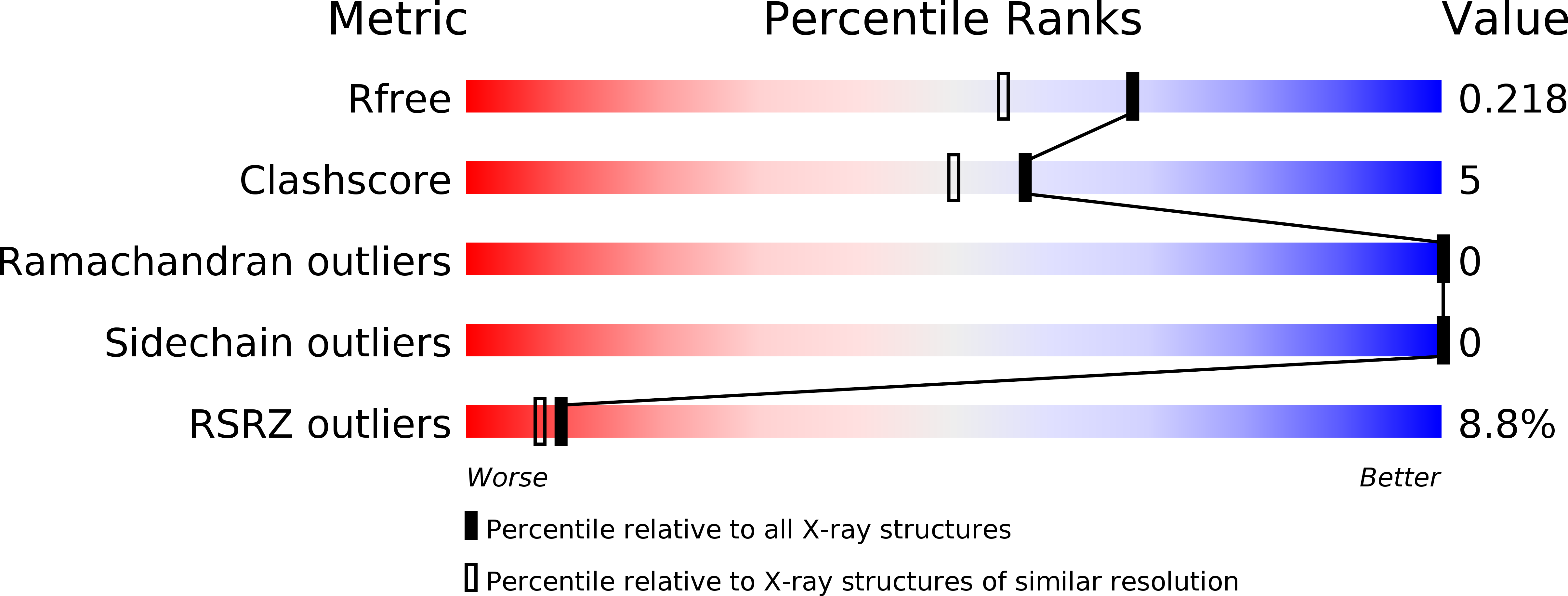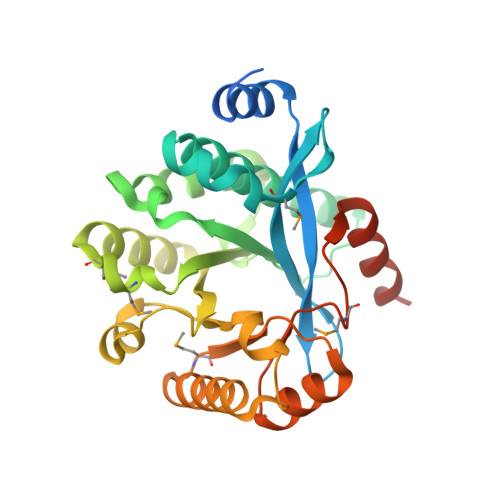Structural insight into the mechanism of c-di-GMP hydrolysis by EAL domain phosphodiesterases.
Tchigvintsev, A., Xu, X., Singer, A., Chang, C., Brown, G., Proudfoot, M., Cui, H., Flick, R., Anderson, W.F., Joachimiak, A., Galperin, M.Y., Savchenko, A., Yakunin, A.F.(2010) J Mol Biology 402: 524-538
- PubMed: 20691189
- DOI: https://doi.org/10.1016/j.jmb.2010.07.050
- Primary Citation of Related Structures:
2R6O, 3N3T - PubMed Abstract:
Cyclic diguanylate (or bis-(3'-5') cyclic dimeric guanosine monophosphate; c-di-GMP) is a ubiquitous second messenger that regulates diverse cellular functions, including motility, biofilm formation, cell cycle progression, and virulence in bacteria. In the cell, degradation of c-di-GMP is catalyzed by highly specific EAL domain phosphodiesterases whose catalytic mechanism is still unclear. Here, we purified 13 EAL domain proteins from various organisms and demonstrated that their catalytic activity is associated with the presence of 10 conserved EAL domain residues. The crystal structure of the TBD1265 EAL domain was determined in free state (1.8 Å) and in complex with c-di-GMP (2.35 A), and unveiled the role of conserved residues in substrate binding and catalysis. The structure revealed the presence of two metal ions directly coordinated by six conserved residues, two oxygens of c-di-GMP phosphate, and potential catalytic water molecule. Our results support a two-metal-ion catalytic mechanism of c-di-GMP hydrolysis by EAL domain phosphodiesterases.
Organizational Affiliation:
Banting and Best Department of Medical Research, University of Toronto, Toronto, Ontario, Canada.

















